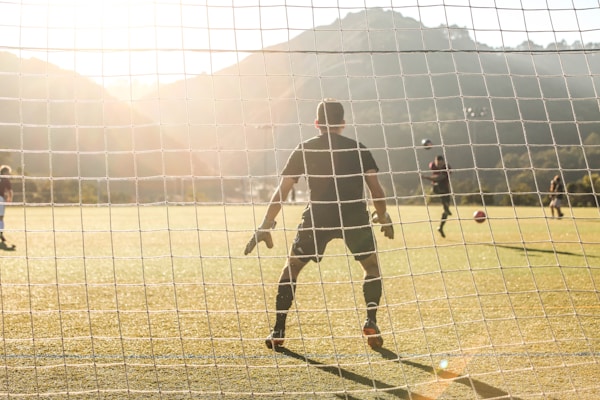There’s nothing worse than being sidelined by an injury, especially when it comes to your favorite sport. However, whether you’re a weekend warrior, a professional athlete, or enrolled in a sports administration graduate program with avid goals to become a fitness trainer, injuries are bound to happen. The good news is that there are ways to prevent and treat common sports injuries. Keep reading to learn more.
Broken Teeth
Broken teeth are a common sports injury. It often occurs when an athlete falls and hits their teeth on the ground. It can also happen when an athlete is hit in the face with a ball or another object. Symptoms of a broken tooth include pain, swelling, and bleeding. If you think you may have a broken tooth, seek orthodontic treatment as soon as possible. Orthodontists are dental specialists who correct teeth alignment problems that may be caused by sports injuries. One common treatment for a broken tooth is to repair it with a dental filling. If the tooth is extensively damaged, the orthodontist may need to remove the broken piece of the tooth and replace it with a dental implant or a dental bridge.
Broken Bones

Broken bones are common injuries in athletes. They can occur when you fall or when you are hit by an object. Bones may also break when you twist or turn your body suddenly. Most broken bones heal within 6 to 8 weeks, but it may take longer for the bone to heal completely. There are many different types of broken bones. The most common type is a fracture, which is a break in the bone. A fracture may be a simple break, where the bone breaks into two pieces, or a compound fracture, where the bone breaks and the bone fragments stick out through the skin.
If you think you have a broken bone, you should go to the hospital right away. The doctor will examine you and may order tests, such as an X-ray to determine the extent of the injury. Treatment for a broken bone depends on the type of fracture and how severe it is. Most broken bones can be treated with a cast or a splint. Surgery may be needed if the fracture is severe.
Serious bone problems often require long-term rehabilitation, especially after bone surgery. Orthopedic services are available, specializing in the care of the musculoskeletal system. You can consult an orthopedist or a specialist in orthopedics to assess your condition and create a customized treatment plan for your faster recovery.
Orthopedists are usually a part of a larger orthopedics team consisting of physical therapists, physicians, nurses, and athletic trainers. They can help restore joint and bone function, reduce pain, and improve blood circulation in the injured area. In addition, non-operative orthopedics can help improve your athletic performance while reducing your risk of long-term negative effects due to strenuous physical activity.
Elbow Injuries
Elbow injuries are common in sports and can result in pain, swelling, and loss of function. The most common elbow injuries are strains or tears of the muscles or tendons that attach to the elbow. These injuries can be caused by a sudden force on the elbow, such as when throwing a ball, or by overuse. Other causes of elbow injury include fractures and dislocations. The treatment of elbow injuries depends on the type and severity of the injury. Minor strains or tears may only require rest, ice, and compression for a few days, followed by gradual rehabilitation exercises. More severe injuries may require surgery.
Most patients recover from an elbow sprain in about four weeks. Your orthopedist may require casting or splinting for two to three weeks for a simple elbow fracture. On the other hand, complex fractures requiring aligning the bones through surgical intervention for proper healing need a longer healing period, usually up to six months. Orthopedic services can help with long-term rehabilitation.
Shoulder Injuries

Shoulder injuries are common in sports and can be caused by a number of factors, including overuse, trauma, or imbalance. The most common shoulder injuries are rotator cuff tears, shoulder separations, and biceps tears. Treatment options depend on the type and severity of the injury. If you have an Acute shoulder injury, the first step is to R.I.C.E. the injury:
- Rest: Take a break from the activity that caused the injury.
- Ice: Apply ice to the injured area for 15-20 minutes every few hours for the first few days.
- Compression: Wrap a bandage around the injured area to help reduce swelling.
- Elevation: keep the injured area elevated above the level of your heart
If you suffered a significant shoulder strain injury or feel intolerable shoulder pain, a tearing, or a pop sensation in your shoulder followed by weakness when lifting your arm, you must obtain prompt medical care. Orthopedic surgeons also advise patients to seek immediate medical care if they can’t move their injured shoulder over the head or fail to perform normal shoulder movement. The same hold when the shoulder feels like it’s not in its socket or the shoulder joint doesn’t look good.
If the injury is more severe, you may need physical therapy. Physical therapy will help you regain strength and range of motion. Surgery may also be necessary for more severe injuries. Overall, common sports injuries can be successfully treated with a variety of approaches, and most people can return to their sport with a minimum of disruption.
The Editorial Team at Healthcare Business Today is made up of skilled healthcare writers and experts, led by our managing editor, Daniel Casciato, who has over 25 years of experience in healthcare writing. Since 1998, we have produced compelling and informative content for numerous publications, establishing ourselves as a trusted resource for health and wellness information. We offer readers access to fresh health, medicine, science, and technology developments and the latest in patient news, emphasizing how these developments affect our lives.







